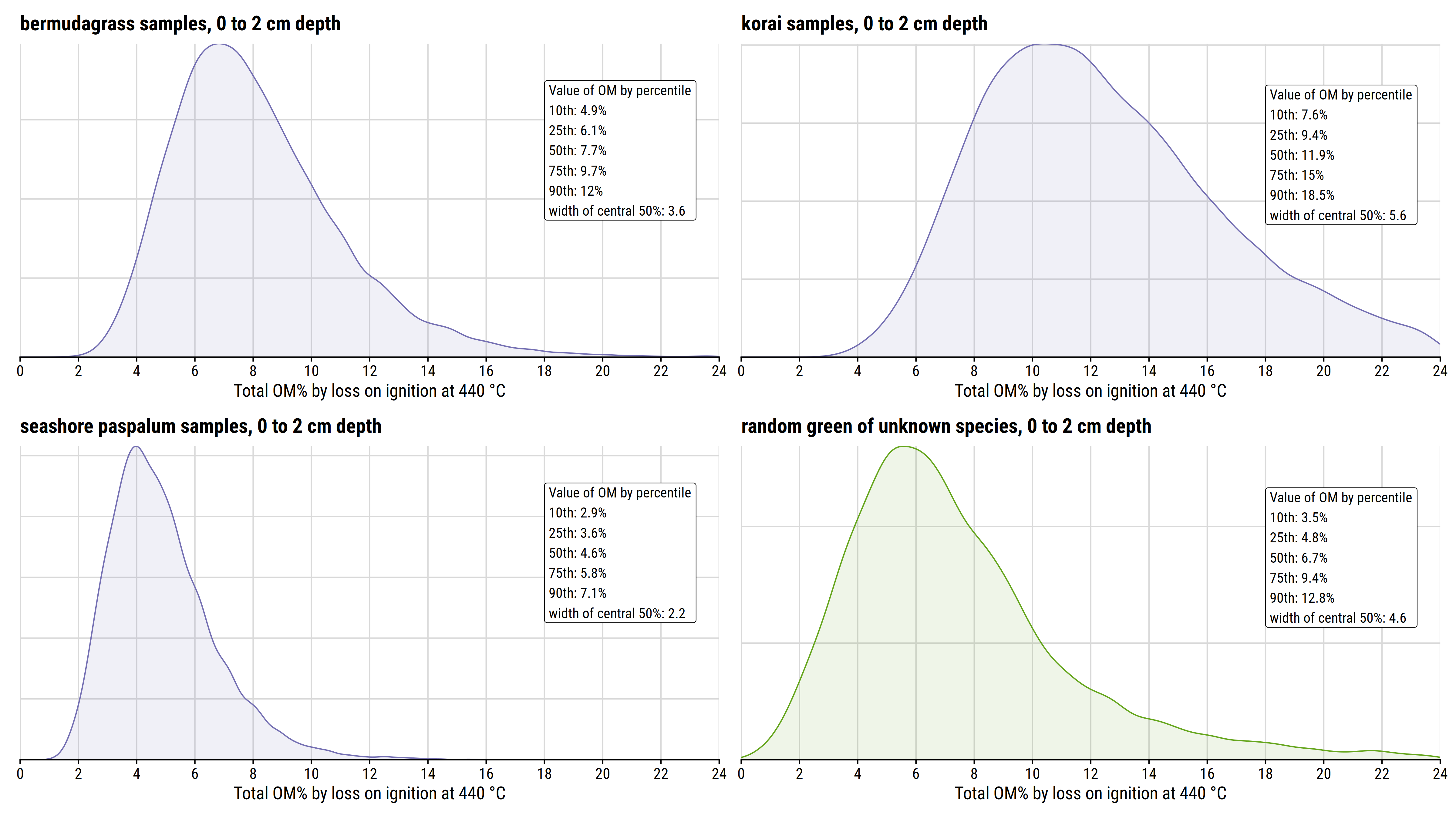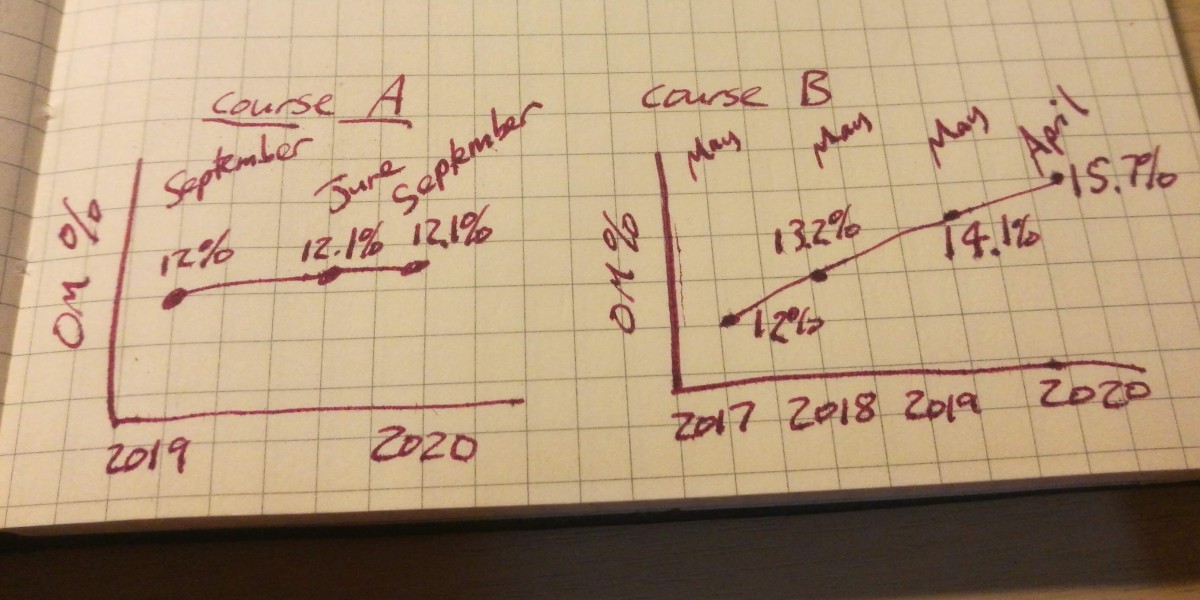These are the predicted distributions and percentiles of total organic matter in the surface 2 cm (0.8 inches) of warm-season grass putting greens.

I include a plot for predicted organic matter of a random green of an unknown species. That’s what I’d expect to find on a green for which I have no samples in the ATC database yet—for total organic matter at the surface of a serangoon grass (Digitaria didactyla) green, for example.
These results are especially useful in the evaluation of past topdressing effect and of future topdressing requirement. This morning I prepared a couple reports for courses that have a time series of these tests. The results look something like this.

At course A, the organic matter is staying constant, so the turf managers there know that the organic matter production over the past year has been matched almost exactly by the topdressing. At course B, the organic matter is being produced faster than it is being decomposed, diluted, or removed. Knowing exactly what is happening with the organic matter makes it easy to make the right decisions about what work to do.
I’ve also shared charts of expected organic matter in cool-season greens.